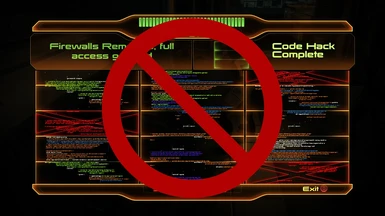A multiyear infrastructure bill appears to be the next agenda item for Congress. Its price tag? Some say north of $2 trillion.
The cost of the legislation speaks to how much has changed since the days when Congress passed the “federal highway bill” every three to five years in a bipartisan manner. Federal highway bills of the past stuck to building and repairing roads, and everyone applauded.
For more Medigel, change MaxMedigel=1 to MaxMedigel=9 (Don't go over 9 or you'll crash the game) For more probes, change MaxProbes=30 to MaxProbes=90 (Don't go over 99 or you'll crash the game) For more fuel, change MaxFuel=1000 to MaxFuel=3000. For unlimited fuel, change FuelEfficiency=1.5 to FuelEfficiency=0.0. Jun 02, 2021 How to bypass Decryption Skill too Low or Electronics Skill too low in Mass Effect. As you travel across the worlds of Mass Effect in between tackling the main planets as laid out in our ME1.

Mass Effect Registration Code Bypass Script
However, a transition from “highways” to “surface transportation” legislation began about 30 years ago. That change in terminology accommodated provisions for rails, mass transit, waterways and airports, with associated increases in spending.
So what is likely to be in an “infrastructure” bill that effects the trucking industry?
Roads and bridges. The infrastructure bill will contain the traditional federal funding for roads and bridges, plus congressional directives on how environmental reviews of road projects are conducted. It is widely recognized that roads and bridges do need repair. Through the work of the American Transportation Research Institute, Congress will also address bottlenecks which slow truck transportation.
Road construction and repair means more than seeing orange cones in the summer months. While care must be taken through highway construction zones, the result will be better travel conditions, improved safety, less driver fatigue and reduced damage to vehicles.

What else is “infrastructure”? Expect provisions for mass transit, waterways, dams, sewer systems and airports, in the “surface transportation” bills. But also look for funding for improved GPS, expansion of rural broadband, resiliency in the electrical grid, safety of urban pedestrians and cyclists, and deployment of electric vehicles.
Many of these infrastructure items also benefit trucking. A reliable electrical system is needed to produce the goods that trucks move, not to mention powering the electric trucks of tomorrow. More exact GPS coordinates allow for better travel planning. The expansive nature of “infrastructure,” though, drives the legislation price tag higher, resulting in two more reasons the infrastructure bill may effect trucking: taxes and regulations.
Taxes. Traditionally, highway users paid for roads through state and federal fuel taxes, registration fees, the federal highway user tax, and excise taxes on lubricants and new vehicles. The last major federal transportation bill, the Fixing America’s Surface Transportation Act, or FAST Act (2015), moved pieces around on the federal financial chessboard and avoided the dreaded word “tax” altogether. This time, most members of Congress don’t show interest in raising the federal fuel tax rate, which hasn’t been touched since 1993.
Congress is discussing a number of other taxes, including a vehicle mileage tax for trucks. The breadth of “infrastructure” has generated thought about taxes on non-highway users, such as a “wealth tax” or possible increases in the rates for estate taxes, corporate taxes and capital gains.
Mass Effect Free Registration Code
Remember, too, that increases in the federal share of funding for roads ratchets up what states must match for their portion of project funding. Some state taxes will likely go up soon, while others have increased their fuel taxes in recent years.
Mass Effect Registration Code Bypass Free
Trucking regulations. Congress will use the infrastructure bill to give policy direction to federal regulatory agencies, such as the Federal Motor Carrier Safety Administration, the National Highway Traffic Safety Administration and others. The new administration issued an executive order outlining its regulatory policy preferences. With Congress and the Executive in the same party, expect to see a full regulatory agenda soon.